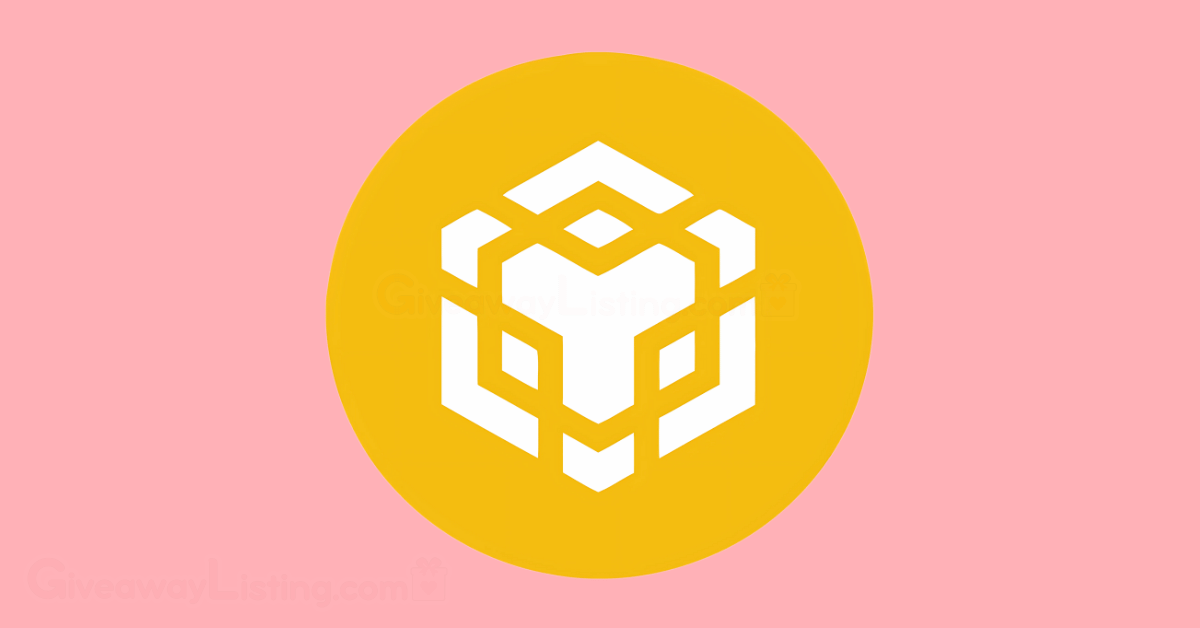What is BNB? BNB Explained – December 2025
BNB, which stands for “Build and Build,” is the powerhouse cryptocurrency for the entire BNB Chain ecosystem. It began its life in 2017 as Binance Coin on the Binance exchange. Today, it has grown into the fifth-largest digital currency by market capitalization, fueling a massive world of apps and services.
If you want to do anything within the BNB Chain’s borders—like pay for transactions, use an application, or vote on how things are run—you’ll need BNB. It’s used by millions, from developers building the next big gaming or finance app to traders looking for better fees and individuals exploring the thousands of projects on the chain.
The BNB Chain ecosystem currently hosts over 2,000 projects, all of which rely on BNB to function. What makes BNB so different is its transformation from a simple utility token into the lifeblood of a multi-chain universe with a deflationary design.
Why is BNB Unique? BNB Features
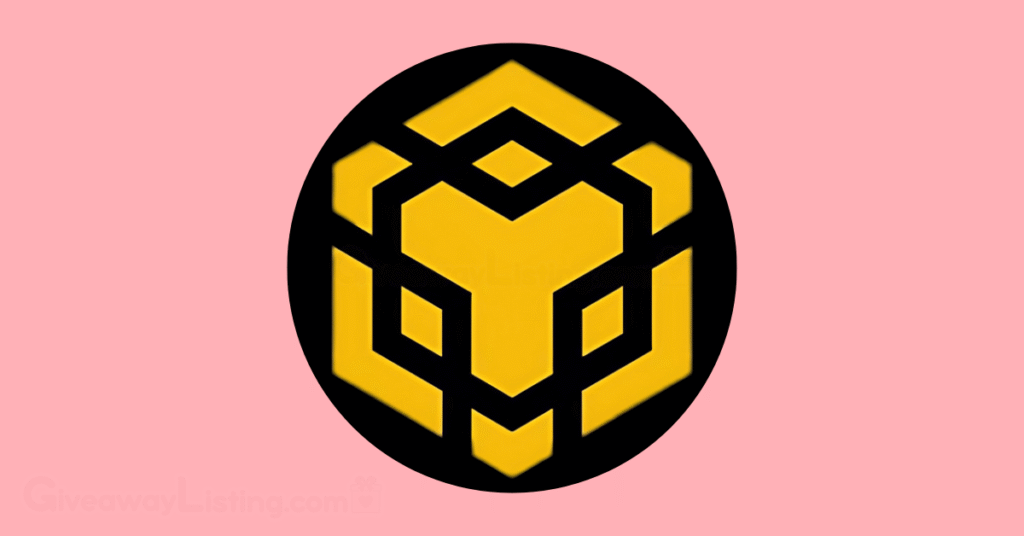
Now that you have a handle on what BNB is, let’s look at what makes it different from the pack. The crypto world is crowded, but BNB has carved out its own space through a specific set of features geared for speed, low costs, and a massive, interconnected ecosystem.
One of the most direct ways to see what makes BNB special is to compare it against other top digital currencies as in the table below:
| Feature | BNB | Bitcoin (BTC) | Ethereum (ETH) | Solana (SOL) | Cardano (ADA) | Ripple (XRP) |
|---|---|---|---|---|---|---|
| Consensus Model | Proof of Staked Authority (PoSA) | Proof-of-Work (PoW) | Proof-of-Stake (PoS) | Proof-of-History (PoH) | Proof-of-Stake (PoS) | Consensus Protocol |
| Avg. Transaction Time | ~3 seconds | ~10 minutes | ~12 seconds | ~0.4 seconds | ~20 seconds | ~3-5 seconds |
| Primary Function | Ecosystem Utility & getting discounts on trading fees | Digital Gold & Store of Value | General-Purpose Smart Contracts | High-Speed DApps | Peer-Reviewed Smart Contracts | Cross-Border Payments |
| Supply Mechanic | Deflationary (Auto-Burn) | Inflationary (Halving) | Deflationary (Fee Burn) | Inflationary | Inflationary | Fixed (Pre-mined) |
The numbers and terms in the table only tell part of the story. BNB’s uniqueness is also deeply tied to its background and the strategic decisions made throughout its history.
BNB History, Facts & Statistics

BNB holds a significant spot in the cryptocurrency world, consistently ranking among the top digital assets by market capitalization. It has grown from a simple token for a trading platform into the lifeblood of a massive and active blockchain ecosystem.
The History of BNB
BNB, which now stands for “Build and Build,” began its life as Binance Coin in July 2017. It was introduced to the world through an Initial Coin Offering (ICO) just before the Binance exchange launched. The initial idea was to offer a utility token that would grant traders discounts on fees, creating a loyal user base for the new platform.
Originally, BNB was an ERC-20 token built on the Ethereum network, with an initial total supply of 200 million coins. However, this was just its starting point. In April 2019, BNB migrated from Ethereum to its native blockchain, the Binance Chain (which would later be rebranded as the BNB Beacon Chain). This move gave it a dedicated network optimized for fast trading.
Recognizing the need for more complex applications, the BNB Smart Chain (BSC) was launched in September 2020. This new chain ran in parallel with the original, adding smart contract functionality and compatibility with the Ethereum Virtual Machine (EVM). This critical development encouraged developers to build decentralized applications (dApps), from DeFi platforms to games, on a faster and cheaper network. This dual-chain architecture was a key step in its development, eventually leading to the unified BNB Chain ecosystem we see today, complete with Layer 2 scaling solutions like opBNB.
BNB Key Facts & Statistics
BNB has an interesting history and even more impressive statistics:
- BNB was launched at an ICO price of about $0.11 in July 2017.
- The original maximum supply was 200 million tokens, but this number is actively being reduced.
- The ecosystem’s goal is to reduce the total supply to 100 million BNB through a process called “burning.”
- Over 60 million BNB tokens have been permanently removed from circulation to date.
- BNB Chain uses a Proof of Staked Authority (PoSA) consensus mechanism, which relies on 21 active validators.
- The blockchain boasts a rapid 3-second block time.
- The BNB Chain ecosystem is home to more than 2,000 projects and dApps.
- The network has proven its ability to handle high traffic, processing over 2,000 transactions per second (TPS).
- BNB is the fifth-largest cryptocurrency by market capitalization, valued at over $110 billion.
- It reached an all-time high of $859.01 in 2025.
- The most significant security incident was a bridge exploit in October 2022, but security has since improved, with losses from hacks dropping by 85% in 2023.
BNB, Binance and BNB Chain
It’s easy to mix up these three, but they serve distinct purposes.
Binance is a centralized cryptocurrency exchange. It is the company that originally created BNB and remains a major player in its ecosystem, offering trading fee discounts and other perks to BNB holders.
BNB Chain is the decentralized blockchain network. It’s an open-source, community-driven ecosystem composed of multiple parts, including the BNB Smart Chain (for dApps) and opBNB (for scaling). This is where the decentralized action happens.
BNB is the native cryptocurrency. It acts as the fuel for the BNB Chain, used to pay for transaction fees, participate in network governance, and interact with the thousands of applications built on the chain. It’s the glue that connects the exchange with the decentralized network.
The value and utility of BNB are closely tied to the health of its ecosystem, but like all digital assets, its future is highly volatile and is subject to market fluctuations and uncertainties.
BNB Price Predictions. Is BNB Going to Crash or Moon in 2025?
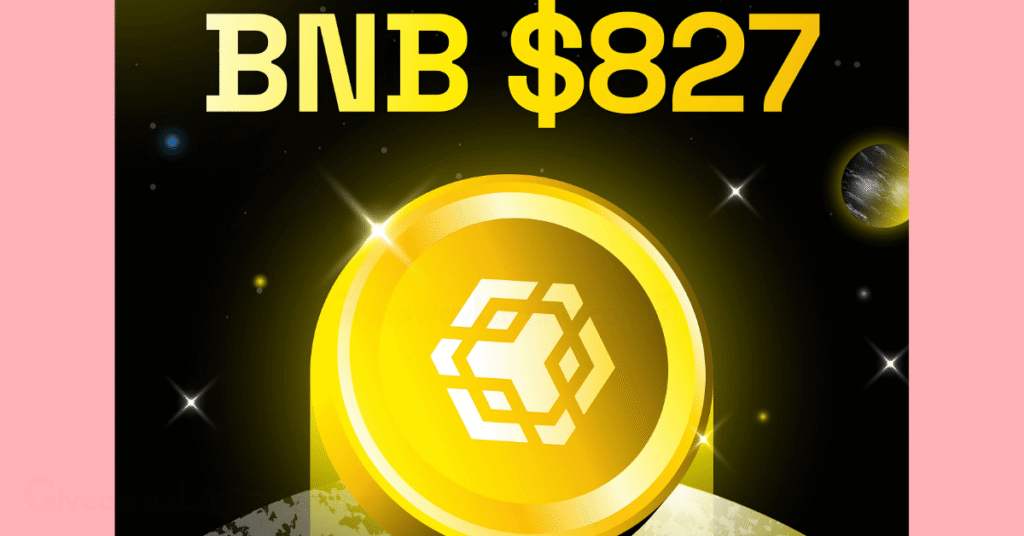
Digital currencies are known for their price swings, and BNB is no exception. Its history is marked by periods of rapid growth and sharp corrections. Over the years, it has seen remarkable price points, climbing from an all-time low of just $0.50 in late 2017 to a staggering all-time high of $859.01 in 2025.
BNB Price Prediction in 2025
Several key elements can influence whether BNB’s price climbs or falls. A significant factor pushing its value up is its deflationary tokenomics. The BNB Chain has an Auto-Burn system that permanently destroys a portion of the supply every quarter. This programmed scarcity, which aims to cut the total supply in half to 100 million tokens, can create upward price pressure as long as demand remains steady or grows. The most recent quarterly burn, for instance, wiped out 1.58 million BNB.
The continuous growth of the BNB Chain ecosystem is another powerful driver. With over 2,000 projects spanning DeFi, GameFi, and NFTs, the demand for BNB to pay for transaction fees and interact with these applications increases. Technological upgrades, like the Pascal hard fork aiming for 100,000 transactions per second, further boost confidence and attract more users and developers, adding to the token’s utility.
On the flip side, regulatory headwinds present a significant risk. The ongoing scrutiny from agencies like the SEC and past settlements, such as the $4.3 billion agreement with U.S. authorities, cast a shadow of uncertainty. Competition is also fierce, with other high-performance blockchains constantly vying for market share, which could siphon away users and developers from the BNB Chain.
Is BNB Going to Crash or Moon in 2025?
Looking at 2025, the debate between a crash and a moonshot is fueled by these competing factors mentioned earlier. The bullish case is strong, built on the foundation of the token burn mechanism and explosive ecosystem growth. The network’s daily active user count is in the millions, and its DeFi platforms hold billions in total value locked. Analysts’ forecasts for 2025 are optimistic, with many setting price targets between $926 and $1,292.
However, the risk of a downturn cannot be ignored. The market is sensitive to regulatory news, and any negative developments could trigger a sell-off. The centralization concerns, stemming from the small set of 21 validators, also remain a point of criticism for some in the crypto community. While security has improved drastically since the 2022 hack, the potential for exploits in the complex world of cross-chain bridges is a persistent technical risk.
Ultimately, whether BNB soars or stumbles in 2025 will depend on which side of the scale tips heavier. If the ecosystem continues its expansion and the token burns proceed as planned, the fundamental drivers point toward continued growth. For traders seeking more detailed charts and price targets, the BNB price prediction can offer more specific trading ideas and analysis. The journey ahead will likely be volatile, but the underlying mechanics of supply reduction and network utility provide a compelling argument for its long-term potential.
BNB Risks, Scams and Hacks

Trading and holding BNB involve market risks and exposure to prevalent scams that could lead to financial loss. BNB’s value is subject to high volatility, a common trait in the cryptocurrency market. Its price can be influenced by market sentiment, regulatory news, and broader economic factors. As a speculative asset, its value is not backed by traditional metrics like company revenue or earnings, meaning its price is determined by supply and demand dynamics in the market.
Regulatory uncertainty poses another significant risk. Governments worldwide are still defining their approaches to digital assets. Actions from regulatory bodies, such as the SEC’s past investigations into BNB’s initial offering, can create market instability. The BNB Chain’s reliance on a limited set of 21 active validators has also led to criticism regarding centralization, which could be a point of concern for some participants.
Technical risks, while decreasing, are still present. The most notable incident was the October 2022 exploit of the BSC Token Hub bridge, where an attacker was able to mint approximately $570 million worth of BNB. Although most of the funds were secured, the event highlighted the vulnerabilities inherent in cross-chain bridge technology.
To manage these risks, here are steps you can take:
- Stay Informed: Keep up with market trends and regulatory news from reliable sources.
- Diversify: Avoid putting all your funds into a single asset. A diversified portfolio can help manage volatility.
- Understand the Tech: Familiarize yourself with the basics of the BNB Chain, including its Proof of Staked Authority (PoSA) consensus model and the function of its ecosystem components like opBNB and BNB Greenfield.
- Use Stop-Loss Orders: When trading, use stop-loss orders to automatically sell your position if the price drops to a certain level, limiting potential losses.
- Long-Term Perspective: If investing, consider a long-term outlook to ride out short-term market fluctuations.
How to Avoid BNB Scams and Hacks?
The popularity of BNB has made it a target for a variety of scams. Bad actors often use sophisticated methods to trick users into giving up their funds or private keys. Common schemes include phishing attacks through fake websites that mimic official Binance or wallet pages, fake airdrops promising free BNB, and fraudulent investment platforms that offer unrealistic returns.
One of the most significant security events was the October 2022 hack of the BSC Token Hub, which demonstrated how vulnerabilities could be exploited on a large scale. Scammers also orchestrate “rug pulls,” where developers launch a new token on the BNB Chain, generate hype to attract investment, and then disappear with the funds.
To avoid getting caught in these traps, always look out for these red flags:
- If it sounds too good to be true, it probably is. Be skeptical of promises of guaranteed high returns or free crypto giveaways that require you to send a small amount of BNB first.
- Verify URLs and sources. Always double-check that you are on an official website. Bookmark official sites to avoid clicking on phishing links from emails or social media.
- Check contract addresses. Before interacting with a new token or dApp, verify its contract address on a block explorer like BscScan. Look for audit reports and community feedback.
- Beware of impersonators. Scammers often pretend to be support staff on platforms like Telegram or X. Official support will never ask for your private keys or seed phrase.
How to Secure Your BNB Wallet?
Keeping your digital assets secure starts with protecting your wallet. Taking a few extra security steps can make a big difference in safeguarding your BNB.
- Use a Hardware Wallet: For storing a significant amount of BNB, a hardware wallet offers the best security, as it keeps your private keys offline and away from potential online threats.
- Enable Two-Factor Authentication (2FA): Always activate 2FA on your exchange accounts and any service connected to your crypto holdings. Use an authenticator app rather than SMS-based 2FA for better security.
- Keep Your Seed Phrase Offline: Your seed phrase or recovery phrase is the master key to your wallet. Write it down and store it in a secure, private, and offline location. Never store it as a digital file on your computer or phone.
- Use Strong, Unique Passwords: Create complex passwords for your crypto accounts and wallets. A password manager can help you generate and store them securely.
- Be Cautious with dApps: Only connect your wallet to reputable and well-vetted decentralized applications. Use a separate “burner” wallet with a small amount of funds for interacting with new or untested dApps.
Always prioritize information from official BNB Chain and Binance channels. Be extremely cautious about connecting your wallet to unknown platforms or clicking on suspicious links, as this is the most common way users lose control of their assets.
Latest News on BNB
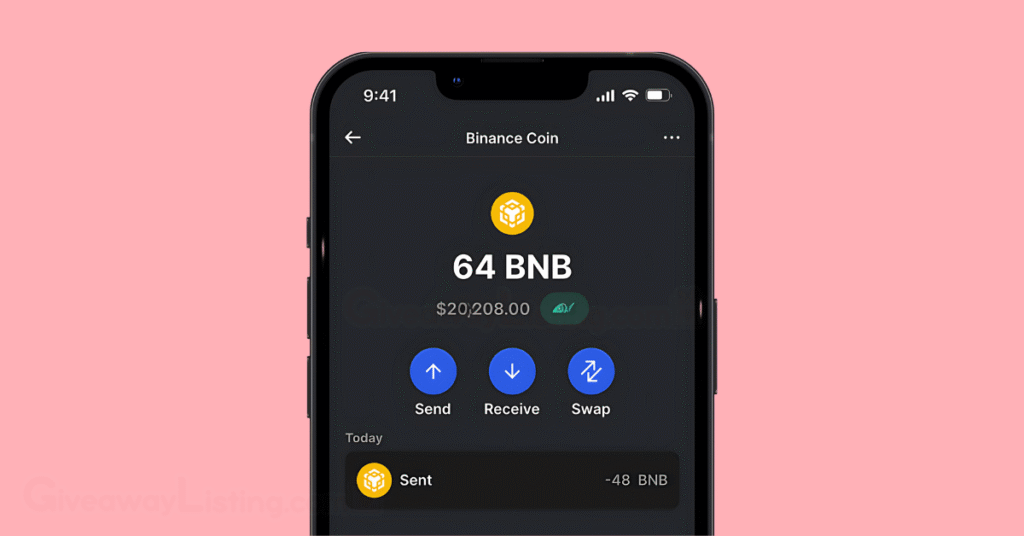
Since its 2017 launch, BNB has grown from a simple exchange token into the cornerstone of a massive blockchain ecosystem. This network now includes the BNB Smart Chain (BSC), the opBNB layer-2 scaling solution, and the BNB Greenfield decentralized storage network, together supporting thousands of projects and millions of users.
The ecosystem has seen remarkable growth, with BSC alone processing 32 million transactions in a single day during a peak period in late 2023, and security has improved, with losses from hacks dropping significantly year over year.
Recent developments continue to point toward a dynamic future for the coin and its ecosystem. You can find more up-to-date information in our dedicated section for BNB news. Here are some of the latest highlights:
- Favorable Regulatory News: In a major development in May 2025, the U.S. Securities and Exchange Commission (SEC) dropped its lawsuit against Binance, removing a significant cloud of uncertainty that had been hanging over the market.
- New All-Time High Price: BNB’s price reached a new all-time high in July 2025, trading near $800. This surge was partly driven by increasing corporate and institutional interest.
- Growing Corporate Adoption: Several companies have announced plans to add BNB to their corporate treasuries. CEA Industries, a Canadian company, revealed plans for a public BNB treasury, while Nano Labs increased its holdings to 128,000 BNB, valued at over $100 million.
- Major Technical Upgrades Planned for 2025: The BNB Chain core team has announced ambitious plans for 2025, including upgrades that aim to increase on-chain capacity significantly. The goal is to reach a throughput of 5,000 decentralized exchange (DEX) swaps per second.
- BNB Hack Recognizes New Talent: The BNB Hack initiative continues to support new projects, recently announcing winners across AI, Decentralized Social (DeSoc), and DeFi, providing them with funding and a Kickstart package to build on the ecosystem.
To stay informed with the most accurate and timely information, follow BNB’s official channels:
- Official Website: bnbchain.org
- Official Blog: bnbchain.org/en/blog
- X (formerly Twitter): @BNBCHAIN
- Discord: BNB Chain Discord
- Telegram: t.me/BNBchaincommunity
How to Get Started With BNB?
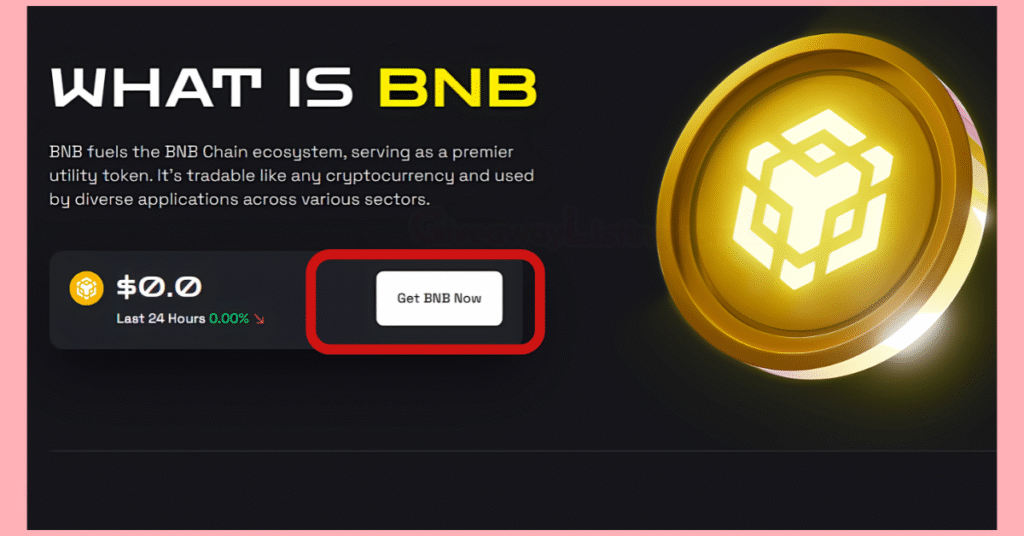
Getting your hands on BNB and interacting with its ecosystem is a straightforward process. The network is designed to be accessible, whether you’re looking to pay for transaction fees, engage with DeFi protocols, or simply hold the asset.
Here is a simple breakdown of the steps to get started:
- Set Up a Compatible Wallet: Before acquiring BNB, you need a place to store it. You can opt for a mobile wallet like Trust Wallet, which has native support for the BNB Chain, or a browser-based wallet like MetaMask. Setting one up is a quick process, but it’s critical to store your seed phrase offline securely. Never share your seed phrase or private keys with anyone.
- Choose Where to Buy BNB: You have several options for purchasing BNB. Centralized exchanges like Binance offer a direct way to buy with fiat currencies (like USD or EUR) via credit/debit cards or bank transfers. Alternatively, you can use decentralized exchanges (DEXs) like PancakeSwap if you already own other cryptocurrencies. Instant-buy services are also available through platforms integrated into wallets.
- Acquire Your BNB: After selecting a platform, the next step is to make a purchase. On a centralized exchange, this usually involves creating an account and completing an identity verification process. After that, you can follow the platform’s instructions on how to buy BNB and complete your purchase.
- Store and Use Your BNB: After buying, you can keep your BNB on the exchange for easy trading or transfer it to your wallet for better security and to interact with the thousands of dApps on the BNB Chain. With BNB in your wallet, you can explore DeFi, GameFi, NFT marketplaces, and more, using your BNB to pay for transaction fees (gas).
BNB has grown far beyond its origins as a simple discount token for a trading platform. It now fuels a multi-chain ecosystem, including the BNB Smart Chain (BSC), the opBNB layer-2 scaling solution, and the BNB Greenfield storage network. Its utility is extensive, from paying for transaction fees and staking to participating in project governance.
Here are some key points to remember about BNB:
- BNB is the native utility and governance token for the entire BNB Chain ecosystem.
- The ecosystem is a multi-chain framework that includes BNB Smart Chain (BSC), opBNB, and BNB Greenfield.
- You can get BNB from centralized exchanges, decentralized exchanges, or direct-buy services.
- Core uses include paying for network transaction fees, staking to secure the network, and interacting with a vast world of dApps.
- A regular token burn mechanism is in place to permanently reduce the total supply of BNB.
- Always prioritize security. Use strong passwords, enable 2FA, and never share your wallet’s private keys or seed phrase.
This information is current as of December 2025.
What is BNB FAQs
Below are answers to some frequently asked questions about BNB in 2025:
What Does BNB Mean?
BNB stands for “Build and Build,” a name it adopted in 2022. Previously, it was known as Binance Coin when it launched back in 2017. It serves as the primary utility token for the entire BNB Chain ecosystem.
How Much is $1 BNB in USD?
The price of BNB changes constantly based on market activity. In mid-2025, its value has fluctuated between $770 and $850. The all-time high for BNB was over $859. For the latest figures, always check a live price chart for the most current valuation.
What is BNB Used For?
BNB is mainly used to pay transaction fees on the BNB Chain, which supports over 2,000 projects. It also gives users up to a 25% discount on trading fees on the Binance exchange. Furthermore, people can stake BNB to earn rewards and help keep the network secure.
Is BNB Also Bitcoin?
No, BNB and Bitcoin are entirely different cryptocurrencies with separate blockchains. BNB was introduced in July 2017 as the native token for the BNB Chain. Bitcoin was created in 2009 and operates on its own unique network as the world’s first cryptocurrency.
Which Exchange Has BNB?
As its original name “Binance Coin” suggests, BNB is the native token of the Binance exchange. Besides Binance, BNB is listed and available for trading on most other major exchanges. You can easily find it on popular platforms like Coinbase, Kraken, and Bitget.
How to Buy BNB on Trust Wallet in Nigeria?
You can get BNB in Trust Wallet by using a third-party payment provider that accepts Nigerian payment options. Another way is to buy BNB on an exchange that has a P2P (peer-to-peer) market, like Binance. You can then move your purchased BNB from the exchange to your personal Trust Wallet address.

